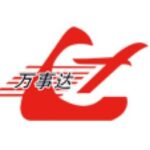The advantages of mini-metallurgical plants in front of "large" plants is especially evident nowadays, when most large companies incurs losses because of incomplete capacity utilization. Paradoxically, Ukraine, empowered for the development of mini-metallurgy, lags far behind global trends – mini-factories is given less than 5% of steel production in the country.
World mini-metallurgy is actively developing more than four decades, with a number of significant advantages compared to large mills:
speed of response to changing demand for different types of products (from raw material preparation to rolling of commodity production on the mini-plant is 10-16 hours, while the large metallurgical plant from a half to three days;
the ability to execute small orders for a particular customer;
lower resource and energy intensity of its own production, making them more cost-effective compared to the enterprises of a full cycle of steel production;
located in close proximity to the consumers of the final products and resources allows such plants to actively use a ready-made infrastructure of the region and, as a consequence, to reduce transport costs and investment to 4-7 times;
the lack in the processing chain of these harmful intermediate stages, as preparation of coal and iron ore, sinter and coke production allows you to reach higher environmental performance;
relatively low cost and has a shorter period of time spent on the construction of a steel mini-mill;
less than that of the large metallurgical enterprises, the payback period and the use of small working areas (five times less than the large steel companies.
Currently, there are already more than a thousand metallurgical mini-plants of various modifications and performance.
New projects in the world
According to analysts, more profitable to build manufacturing facilities in developing countries such as China, Brazil and India, where continued stable growth of demand for steel products. In a short time in the world, plans to launch a number of new mini-plants, namely:
in Belarus up to 2015 will launch a plant of sheet metal (with annual capacity of 600 thousand tons, and investments $650-700 million) and the factory iron casting (investment $300-400 million).
in Northern Iraq in the first quarter of 2013, the Jordanian Mass GLobal Investment will launch a plant for the production of rebar 10-32 mm (capacity of 1 million tons per year).
in Japan's six largest metallurgical and machine-building companies of Japan, including Kobe Steel Ltd., Hitachi Metals Ltd., IHI Corp. and Kawasaki Heavy Industries Ltd. collected in 2013 to establish a joint venture for titanium production for the aviation industry, potravin 20 billion yen ($240 million).
in the US, to 2016 is the world's largest steel pipe manufacturer Tenaris plans to build a seamless pipe factory worth $1.5 billion (with a capacity of 650 thousand tons per year).
in Algeria to 2017, the company Qatar International, a joint venture by Qatar Steel and Qatar Mining, will build a plant worth $2 billion (with a capacity of up to 5 million tons).
in China, Nippon Steel and Sumitomo will build a plant for the production of sheet metal.
Ukraine is lagging behind
However, in Ukraine, despite a number of significant advantages for the development of such facilities, mini-metallurgy is poorly developed. In 1999 appeared the first metallurgical mini-factory, established on the basis of the EAF, crimp and koprovogo of the shops of Donetsk metallurgical plant JSC "MMZ "ISTIL (Ukraine)", today known as PRJSC "Donetsk electrometallurgical plant" (Donetsk electrometallurgical plant). Its capacity is 1 million tons of steel per year. Currently, the plant is stopped and its further fate is not known.
In 2008, a second Ukrainian mini-mill steel complex LLC "Electrostal" Kurakhovo in the Donetsk region, the investor of which was the "Donetsk metal rolling plant" (DMPZ), faced with the shortage of steel billet. The advantage of the "Elektrostal" is the use of new modern equipment and located in the vicinity of thermal power plant. Today, despite the difficulties with the market and even at some time the suspension of production, the enterprise operates.
In 2009, the list of Ukrainian mini-mills joined the renewed factory "Azovelectrostal". The reconstruction was carried out with the aim of providing a steel casting engineering departments of the concern "Azovmash", and also to work with third-party consumers.
At the end of 2009, OOO "TSA-steel Group" on the basis of the former Pavlograd plant of technological equipment has built a steel making complex with annual capacity of about 250 thousand tons At present due to a number of organizational and technical reasons, the company is suspended.
Finally, in October 2012 was inaugurated the last of the existing in Ukraine "mini-mills" and the largest among them electric-furnace melting complex "Interpipe Steel" with a capacity of 1.32 million tonnes of steel per year. It is built on the site of JSC "Nizhnedneprovsky tube rolling plant", entering into group "Interpipe" with the aim of replacing the outdated open-hearth furnaces and providing pipe and wheel production with its own steel billets.
In the future there are several projects of construction of mini-plants in Ukraine that are under negotiation. One of the most visible projects may be the construction in 2014 bila Tserkva electric plant, who spent many years trying to implement the company "Euro Finance".
In Russia compared to Ukraine today is more developed mini-metallurgy in the near future it is planned to implement several projects of mini-mills. In 2013 it is planned commissioning of 3 mini-plants on production of building metal products – factories of "Severstal", NLMK and "Evraz (Stan "the South").
Svetlana Stasovsky,
UGMK.INFO
